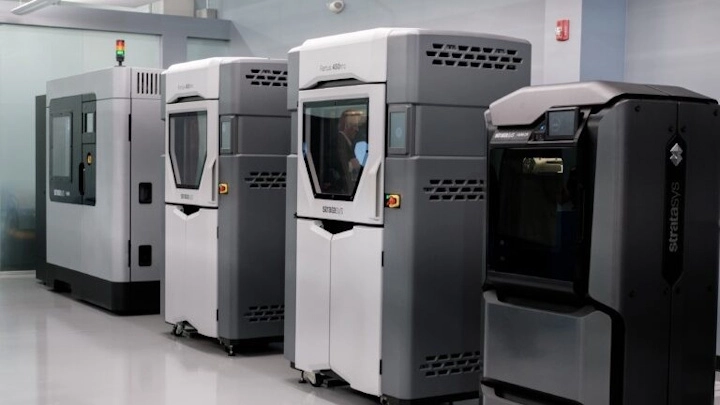Carbon fiber, aluminum, and a little titanium: these are the materials we traditionally associate with building race cars. However, some add thermoplastics like Ultem to the list. Joe Gibbs Racing (JGR), one of NASCAR’s most prominent teams, has been doing this for a long time.
"There are those who think that 3D printing was invented last year"
said Fadi Abro, global senior director for automotive and mobility at Stratasys. The company, which recently returned official 3D printing partner of NASCAR, has a long-standing relationship with JGR, dating back nearly two decades.
Teams have a very limited set of elements they can modify on vehicles, but this makes every little detail they have access to crucial. Every microscopic advantage can make a huge difference to the team.
Abro explained.
JGR currently has five 3D printers, which it uses in various applications. Some of these are common to other industries, such as rapid prototyping, tools, and support devices. However, the team also prints parts directly onto race carssuch as housings, ducts and supports.
These components are fundamental to the vehicle's performance on the track. If there are adjustments that need to be made, they turn to the printer, which produces the part overnight. The next day, they have a component ready for specific use on a certain track. This gives them a competitive advantage.
Abro added.

3D printers at the NASCAR R&D center in Charlotte, North Carolina
3D printing is common in NASCAR
While track-specific parts are nothing new in motorsport, the speed at which they can now be produced and perfected is unprecedented.
Parts that do not need to withstand extreme conditions are printed with polymers such as ASA and ABS. Components subject to high forces, such as air ducts or aerodynamic fins, can be made from thermoplastic reinforced with fragmented carbon fiber. This material provides high resistance without significantly increasing weight.
Some parts of racing cars need to withstand high temperatures. In these cases, parts intended for areas such as the engine compartment or braking systems use Ultem, a thermoplastic that withstands intense heat.
A curious example was when NASCAR required certain tubes to be made from a transparent material to ensure teams weren't hiding anything inside.
Abram said. To achieve this, JGR used a semi-transparent polycarbonate, which, despite not being crystal clear, allowed enough to be seen to meet the organization's requirements.
Like other motorsports competitions, NASCAR implements strict rules and uses standardized components to maintain balanced competition and control costs. Typically, this involves selecting a supplier that produces specific items that all teams must purchase. However, NASCAR has also started manufacturing some of these standard parts using 3D printing.
Also read:
Source: pplware.sapo.pt


